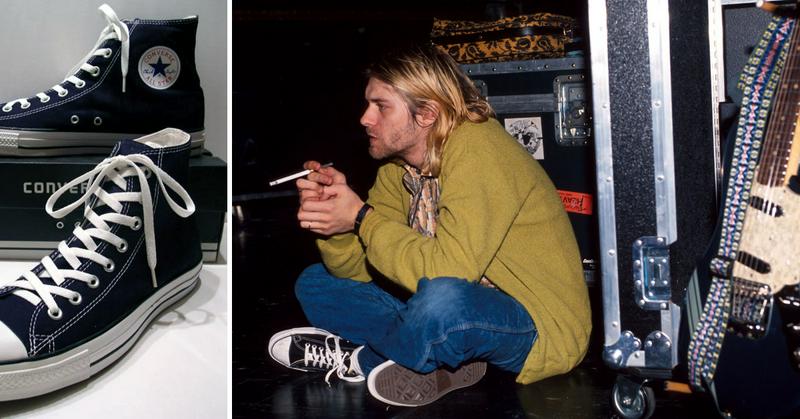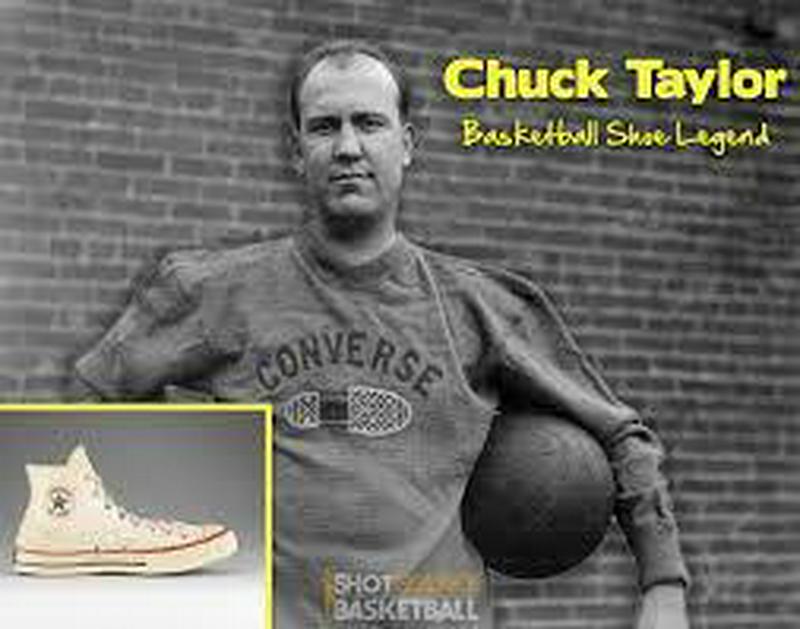Chuck Taylors: The Basketball Shoes That Went Punk Rock
By | June 20, 2020

Converse All-Stars, also called "Chuck Taylors" or simply "Chucks," found new life as a rock 'n roll shoe after they disappeared from basketball courts. Members of The Ramones, The Sex Pistols, Blondie and The Clash were all known to wear Chucks, but the inexpensive general-purpose sneaker was also a favorite of Elvis Presley and George Harrison. You just couldn't really go wrong with Chucks -- the basic canvas-and-rubber design makes a casual retro-sporty shoe for people who don't necessarily play sports. And as we saw time and again, whether it's a famous rock star or a struggling art-school student, Chucks wearers tended to wear them into the ground. The more grime and abuse, the better. Since the late '70s, Chucks have been a fixture of street style.

Chucks span the course of modern American history. The iconic shoes with a star date back nearly to basketball's peach basket days and continue through to the feet of Gen Z kids today. The basketball star who popularized the seminal sneaker, Charles “Chuck” Taylor in the ’20s, traversed the country organizing basketball clinics to help sell Converse All Stars.
Obviously, Taylor did a hell of a job as Chuck Taylors became the de facto basketball shoe for over 30 years. However, somewhere along the line Chuck Taylors lost their athletic luster but gained some serious street cred, becoming the coolest shoes on the block.
Chuck Taylor, An Amazing Salesman

Chuck Taylor started as a basketball player but back in the ‘20s you could make a lot more money as a salesman. Especially, when you could sell like Chuck. Taylor, the fledgling salesman, helped the company with design, adding increased flexibility and ankle support. He also bolstered their marketing by adding the trademark all star logo. Without Chuck Taylor, it’s highly unlikely that Converse, which began as a rubber-soled galoshes maker, would have ever invented one of the most historic sneakers in history.
A Basketball Monopoly

Thanks to Chuck Taylor’s impressive adjustments and tireless selling, Converse All Stars became the official shoe of the Olympics from ‘36 to ‘68. Even the Armed Forces choose the sneaker as their official trainers for all of World War II. What other shoes can say that? By the ‘60s Chuck Taylor owned a monopoly in the basketball shoe market that will never be equaled. Converse controlled nearly 80% of the basketball market and 90% of professional and collegiate players sported Chuck Taylors.
Falling Behind

By the ‘70s, Chuck Taylor’s innovations from the ‘20s began to fall behind the times. Rivals Nike and Adidas were experimenting with leather tops and harder rubber soles that increased support and improved performance. Converse stuck with their warhorse but their outdated design couldn't compete. The last NBA player to rock Chucks was Tree Rollins during the ‘79-’80 season.
After losing their stranglehold on the basketball market, Converse struggled to find an identity. Darryl “DMC” McDaniels of Run-DMC, who had a hit with a song about sneakers, described the fall of Chucks: “The rise of sneaker culture killed Converse in the 80s. Sneakers were aspirational. Hardly nobody in the NBA was wearing old-school Chuck Taylors in the '80s. You had Puma, Adidas, Nike. Chucks got old-looking fast. All these other companies had the shell toes, the fly colors, the cushioning. In New York, no one was looking for canvas shoes. It’s not an accident we called the song “My Adidas.”
From The Court To The Street

While Converse lost their cache in the basketball market, another sect of society started buying Chucks in mass. The Ramones were routinely seen in Chuck Taylors, establishing a look that carried though to Nirvana, and The Strokes. The many subgenres of punk, grunge, and alt rock found their footwear of choice. A former long-time Converse manager detailed Converse’s internal transformation, “We always thought of ourselves as an athletic shoe company. Maybe too much, frankly. The Chuck Taylor was the foundation of the company, but we didn’t want to position the product in an angry way. Chuck Taylors were for the freaks and geeks.”
However, the grunge kids weren’t the only ones getting into Chucks. On the west coast, hip hop took to Chucks for reasons Ice Cube can tell best. “Growing up in Compton [Los Angeles] in the ’80s, I started wearing Chuck Taylors by watching my older brothers, my friends, my uncles. All the gangbangers wore Chuck Taylors. You’d see all these gangsters going to the surplus stores and buying Chuck Taylors because they looked good with a pair of khaki pants and a T-shirt. You could spend $60 and look fresh. Black Chuck Taylors worked with that raw, hard-core street feel that N.W.A wanted, even if some people were more into Jordans.”
Mistakes And Customizable Kicks

Thanks to celebrities, new life revitalized Converse and their longest-running shoe. Ironically, their success persisted despite their best bungling intentions. In the 90’s they tried to make a comeback in basketball but struggled to compete with Nike and the established legend of someone named Michael Jordan. Converse signed Latrell Sprewell and Dennis Rodman. Sprewell choked his coach and Dennis Rodman started wearing wedding dresses and marrying himself. The days of Magic Johnson and Larry Bird were long gone.
The company also tried to improve the shoe in the ’90s by making them more comfortable and minimizing design inconsistencies. People hated them. According to the Washington Post, “They missed the imperfections in the rubber tape that lines the base of the shoe.” Smartly the company went back to making less perfect shoes. Eventually, celebrities like Debbie Harry started making custom Chucks and a new fad for a 70-year-old sneaker came to life. No other shoe has gone through so many renditions or meant so much to so many different people from disparate walks of life.
